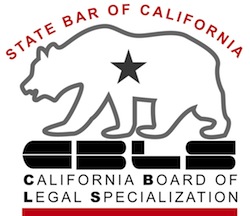One of the first questions a bankruptcy trustee will ask you at the hearing in your bankruptcy case is: did you read the schedules before you signed them?
The obvious, and expected, answer is YES.
And if your answer is “yes”, then the trustee can conclude that you stand behind the information that the schedules contain.
You signed them under penalty of perjury, after all.
But did you really read them?
Let’s talk about it.
Get your schedules right
Schedules is bankruptcy lingo for the lists of assets, creditors, budgets and financial history that make up the initial bankruptcy papers. More bankruptcy terms.
Your right to a discharge of dischargeable debts is based on making full disclosure about your financial situation in those schedules.
That disclosure starts with the official forms that make up the schedules. They are one-size-fits-all. So the questions include inquiries about your airplanes and the livestock you own, things that don’t often appear on my clients’ bankruptcy schedules.
The schedule of personal property assets, Schedule_B , asks 35 questions about what you own. Unless you read each question carefully and give thought to your answer, it’s all too easy to carelessly omit assets.
Assets are more than things with a physical presence: assets include rights in a probate estate, participation in a class action suit, and rights to a tax refund.
The most frequently omitted asset in my experience is legal claims. For bankruptcy purposes, a legal claim isn’t just the lawsuit that you’ve already filed. It’s the right to assert a claim based on events that have already happened.
Whether your attorney asks you to fill out a questionnaire or interviews you for the information necessary to fill out the forms, the exercise merits your best efforts.
How to review schedules before signing
Unless you are keen on spending some extended time as a guest of Uncle Sam on a conviction for perjury, or losing your bankruptcy discharge for recklessly filing untruthful schedules, it pays to know how to review the draft schedules your attorney has prepared.
Don’t limit yourself to reviewing the information that has been typed into the form. Look for what isn’t there, too.
That’s a lot harder, because it requires that you read the questions on the form and consider whether you really have nothing to report in response to the question.
Believe me, though, it’s worth the effort. You can catch things you forgot to tell your attorney. You may catch creditors or assets that were somehow omitted from the schedules.
You want to catch any mistakes before the schedules are filed. Careless mistakes on the papers casts doubt on the accuracy of the rest of your schedules.
Making corrections at the first meeting of creditors
All is not lost if you remember something after your schedules are filed that should have been included.
Another one of the trustee’s standard questions at the first meeting of creditors is “are there any errors or omissions in your schedules you want to bring to my attention”.
Take up the trustee’s invitation to make any additional disclosures needed to make the information in the trustee’s possession complete.
You want to take the initiative to correct the record.
Give it your best effort
The effort required of you to get a bankruptcy discharge isn’t very great. The most important of the things you must do is file accurate schedules.
After that, most bankruptcy cases are a piece of cake.
More
Rules for appearing at the first meeting of creditors
What if you skipped a creditor
List it or lose it: the price of nondisclosure
Image courtesy of openclipart.Find






